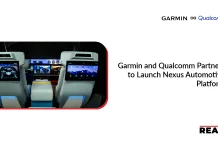In the era of smart technology and automation, proximity sensors have emerged as a cornerstone of innovation, transforming the way we interact with our surroundings and enabling seamless automation in various industries. From smartphones and home appliances to industrial machinery and automotive systems, the ubiquitous presence of these sensors has redefined user experience, safety, and efficiency. As per the report released by Extrapolate, the global proximity sensors market is expected to grow rapidly and reach a valuation of 6.75 billion by 2030.
Let’s learn more about the fundamental principles behind their functionality, explore their diverse range of applications, and examine the pivotal role they play in shaping the future of technology.
Introduction to Proximity Sensors
A proximity sensor functions by detecting the presence or approach of nearby objects without requiring physical contact. Listed below are some of the types of these sensors.
- Inductive: These sensors identify nearby metallic objects by generating an electromagnetic field around themselves or on a sensing surface.
- Capacitive: Utilized for detecting both metallic and non-metallic objects.
- Photoelectric: Employing a light source and receiver, these sensors detect objects.
- Magnetic: These sensors utilize an electrical switch triggered by the presence of permanent magnets within a sensing area.
How Proximity Sensors Operate
Proximity sensors operate by converting data regarding an object’s presence or movement into an electrical signal. When an object enters their range, they emit an ON signal. There are various types of these sensors as mentioned above, each with its own working principle. Capacitive sensors detect changes in capacitance between the sensor and an object. Inductive sensors identify eddy currents caused by external magnetic fields on a conductive surface. Magnetic proximity switches are activated by a magnet, turning on when the reed switch is triggered. Notably, these sensors are indifferent to the color of the object they detect, relying solely on physical movement for effectiveness.
Applications of Proximity Sensors Across Diverse Industries
Proximity sensors find applications across various sectors including automotive, manufacturing, and food and beverage industries. Their utilization aims to enhance safety, boost productivity, and minimize operational interruptions.
● Automotive Industry
These sensors find extensive use in the automotive sector for diverse purposes like parking assistance, collision prevention mechanisms, and automated braking systems. Additionally, they serve to identify passenger presence and regulate airbag activation correspondingly.
● Manufacturing Industry
They play a crucial role in industrial operations, particularly in manufacturing settings, where they serve multiple functions including identifying components along assembly lines, supervising machinery efficiency, and alerting to potential safety risks.
● Food and Beverage Industry
Proximity sensors are imperative in the food and beverage sector, serving various purposes like identifying liquid or powder presence, overseeing food quality, and upholding packaging security.
● Other Industries
They find applications in diverse sectors including construction, mining, and aerospace, where they serve purposes like obstacle detection and structural integrity monitoring.
What to Keep in Mind When Choosing a Proximity Sensor
Selecting an appropriate proximity sensor entails evaluating various aspects such as:
● Sensing Range
The effective range of a proximity sensor is crucial as it defines the distance within which objects can be detected. It is imperative to select a sensor with a suitable sensing range that aligns with the specific application requirements.
● Sensing Method
Various categories of proximity sensors employ diverse sensing techniques, including electromagnetic, ultrasonic, and optical methods. Selecting a sensor that aligns with the specific application’s sensing method is paramount.
● Environmental Conditions
Proximity sensors are versatile, functioning effectively across diverse temperatures and environments. However, selecting the right sensor tailored to the unique environmental conditions of the application is crucial for optimal performance. Whether it’s extreme temperatures, varying humidity levels, or challenging industrial settings, ensuring compatibility with the environment enhances reliability and longevity.
Future Trends in Proximity Sensor Technology
The field of proximity sensor technology is advancing swiftly, introducing enhanced performance and capabilities through the development of innovative sensors. Here are some major future trends in this technology:
● Miniaturization
The size reduction and increased compactness of these sensors render them well-suited for use in scenarios with spatial constraints.
● Wireless Connectivity
These sensors are currently in the developmental phase, incorporating wireless capabilities to establish communication with diverse devices and systems.
● Smart Sensors
Cutting-edge sensors incorporating self-diagnostic capabilities and predictive maintenance functionalities are currently under development.
Concluding Remarks
The realm of proximity sensors stands as a testament to the remarkable synergy between technology and human interaction. From streamlining everyday tasks to revolutionizing industrial processes, these sophisticated devices have woven themselves into the fabric of our modern world.
Looking ahead, the trajectory of these sensors points towards a future marked by further innovation and integration. With ongoing advancements in sensor technologies, the potential for enhanced precision, expanded applications, and seamless integration into diverse systems is boundless. As we stand on the cusp of this technological frontier, the collective imagination of innovators and engineers continues to propel the evolution of proximity sensors, promising a future where automation, safety, and user experience converge in unprecedented ways.
Browse More Posts:-
Latex Agglutination Test Kits Market
Aerospace Titanium Market
DC Switchgear Market
Sauerkrauts Market



